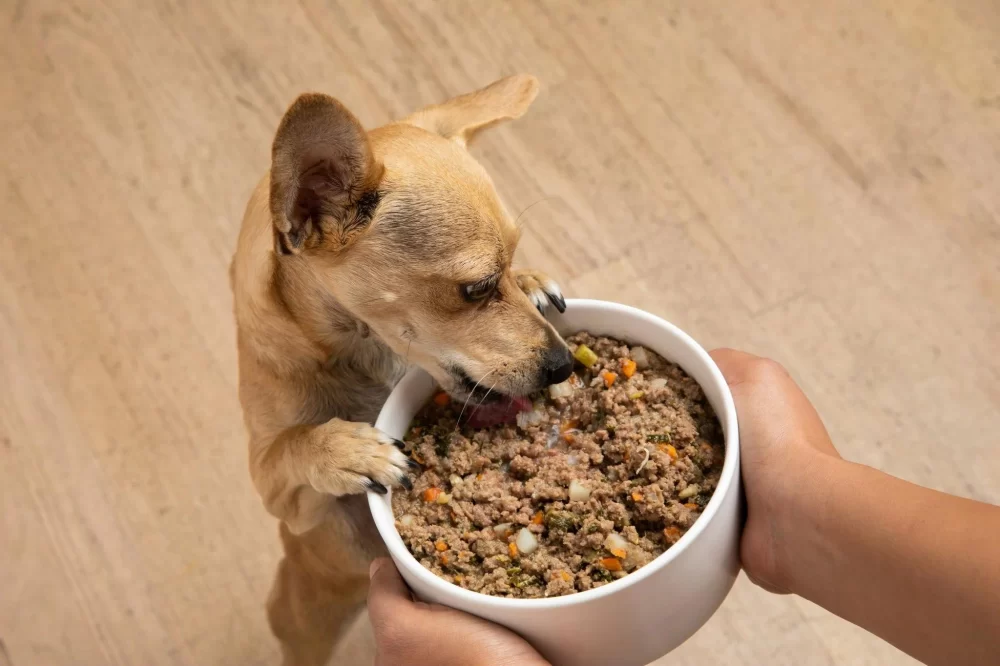- Benefits-of-Homemade-Dog-Food-for-Weight-Loss
- Key-Ingredients-for-Effective-Weight-Loss-Dog-Food
- How-to-Prepare-Homemade-Meals-for-Dogs-Losing-Weight
- Real-Life-Examples-and-Success-Stories
- Professional-Tips-to-Maintain-Dog-Weight-Safely
1. Benefits of Homemade Dog Food for Weight Loss
Feeding your dog homemade dog food for weight loss offers several compelling advantages compared to commercial diets. Firstly, it provides full control over the ingredients, allowing pet owners to eliminate unhealthy fillers, excessive carbohydrates, and artificial additives often found in mass-produced dog foods. This control is crucial in managing calorie intake, which directly impacts weight loss success.
Moreover, homemade meals can be tailored to your dog’s specific nutritional needs, factoring in age, activity level, and health conditions such as diabetes or joint issues. The result is a more balanced and wholesome diet that supports steady and safe weight reduction. This personalized approach also enhances digestion and energy levels, encouraging your dog to stay active—a vital part of any weight management plan.
Additionally, preparing homemade food creates an opportunity to bond with your pet and monitor their eating habits closely, spotting any changes in appetite or preferences early. For those seeking natural solutions and a transparent diet, homemade dog food serves as an excellent option.
Understanding Weight Loss Beyond Calories
While calorie reduction is fundamental, quality matters equally. Homemade dog food for weight loss often emphasizes nutrient density over mere calorie counting. Ingredients rich in lean protein and fiber not only satisfy hunger but also promote muscle retention during weight loss. This balance is essential because losing fat without muscle loss ensures your dog remains strong and healthy.
2. Key Ingredients for Effective Weight Loss Dog Food
Choosing the right ingredients is the backbone of successful homemade dog food for weight loss. Here are critical components to include and avoid:
Lean Proteins
Lean meats like chicken breast, turkey, and fish provide essential amino acids necessary for maintaining muscle mass. They are lower in fat compared to red meats and help keep your dog satiated.
Complex Carbohydrates and Fiber
Carbohydrates such as sweet potatoes, pumpkin, and brown rice offer energy while being rich in fiber. Fiber is crucial as it improves digestion and prolongs fullness, reducing begging behavior.
Vegetables and Antioxidants
Incorporate dog-safe vegetables like green beans, carrots, and spinach. These add vitamins, minerals, and antioxidants that support overall health and metabolism.
Healthy Fats
Small amounts of omega-3 fatty acids, found in fish oil or flaxseed, help reduce inflammation and promote joint health—important for overweight dogs prone to mobility issues.
What to Avoid
Avoid high-fat ingredients, excessive grains, and processed additives. Also, refrain from using table scraps or foods toxic to dogs, such as onions, garlic, and grapes.
3. How to Prepare Homemade Meals for Dogs Losing Weight
Preparing homemade dog food for weight loss involves not only selecting the right ingredients but also understanding portion control and cooking methods. Here’s a step-by-step approach:
Step 1: Calculate Your Dog’s Caloric Needs
Consult with a veterinarian to determine your dog’s ideal daily calorie intake for weight loss, considering breed, size, and activity level. This ensures a tailored approach rather than guesswork.
Step 2: Balanced Meal Composition
A typical weight loss meal consists of 40% lean protein, 50% vegetables and complex carbs, and 10% healthy fats. For example, a meal could include boiled chicken breast, steamed green beans, and mashed sweet potato with a drizzle of fish oil.
Step 3: Proper Cooking and Storage
Cooking ingredients thoroughly enhances digestibility and food safety. Avoid seasoning or adding salt. Store portions in airtight containers to maintain freshness and simplify feeding routines.
Step 4: Gradual Transition
Switching to homemade food should be gradual over 7–10 days to prevent digestive upset. Mix increasing amounts of homemade food with the current diet until fully transitioned.
Step 5: Monitor and Adjust
Track your dog’s weight weekly and adjust portions or ingredients accordingly. Weight loss should be steady—about 1-2% of body weight per week—to avoid health risks.
4. Real-Life Examples and Success Stories
Consider the story of Bella, a 7-year-old Labrador who was overweight and lethargic. Her owner started preparing homemade dog food for weight loss focusing on lean chicken, pumpkin, and green beans. Within three months, Bella lost 12 pounds, regained her energy, and improved her mobility. The owner emphasized how tailoring meals based on veterinary advice and consistent portion control made all the difference.
Another case involved Max, a diabetic Beagle, whose condition improved significantly when switched to a homemade diet rich in complex carbs and fiber with carefully measured protein. Max’s weight stabilized, and his insulin needs decreased, showcasing how diet influences overall health beyond weight.
These stories highlight that with dedication and proper guidance, homemade dog food for weight loss can transform not just the scale but your dog’s quality of life.
5. Professional Tips to Maintain Dog Weight Safely
While homemade dog food is powerful, it should complement a comprehensive approach to weight loss:
Regular Exercise
Exercise boosts metabolism and maintains muscle mass. Tailor activity levels to your dog’s condition, starting with gentle walks or swimming.
Routine Veterinary Checkups
Regular vet visits ensure your dog’s weight loss plan is safe and effective. They can detect underlying health issues and recommend supplements if needed.
Patience and Consistency
Weight loss is a gradual process. Consistency in feeding homemade meals and exercise, combined with positive reinforcement, encourages lasting habits.
Utilize Trusted Resources
For tailored product recommendations, recipes, and professional advice, visit Hidden Brook Veterinary, where experts offer the best guidance and products for canine weight management.
By investing time and care into preparing homemade dog food for weight loss, you can help your furry friend achieve a healthier, happier life while deepening your bond through nutrition-focused care.












